We've been wanting to circle Lake Michigan for a while now. Technically, it's not difficult: the entire loop from our house takes about 20 hours, or two, three days at most. But that's not our plan, of course: the idea was to drive leisurely, stopping at various beautiful spots. Such a trip requires at least two weeks, and we've never had enough: my vacations were long two weeks a year, and only relatively recently have they increased to four weeks.
But now I work remotely, and that changes everything completely: all I need to work is a laptop, internet access, and, preferably, a more or less comfortable desk. And whether that desk is at home, in a hotel, or in a rented house—no one cares.
We decided to go in the second half of July: by that time, the water in Lake Michigan and Lake Superior warms up to a comfortable (Michigan, but, as it turned out, not everywhere) and acceptable (Superior) level. We set aside two weeks for the trip. I planned to work almost the entire time, with the exception of one day.
And then came the usual routine: planning a route, booking accommodations, finding forest trails for walks and points of interest in each place… I'd done all this before. The hardest part was choosing the cities where we'd stay. I'm not sure the choice I made was the best, but what happened, happened.
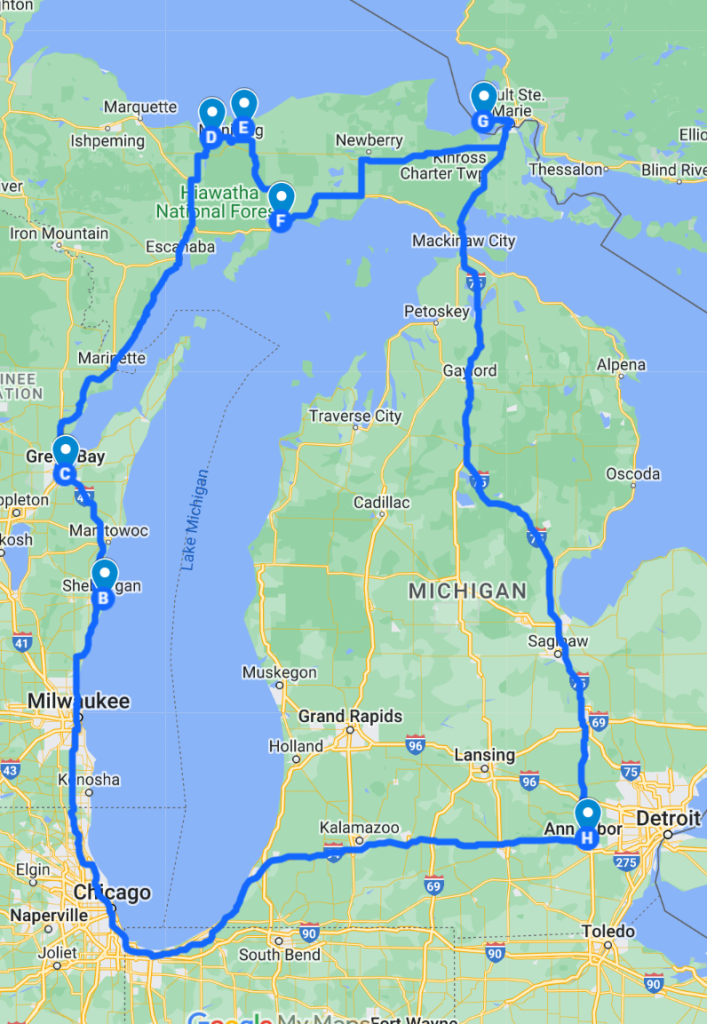
Trip map
Halfway to Chicago
We packed all our things into the car the night before. We got up in the morning, had a leisurely breakfast, and were off. Our first stop was a Michigan park on the shore of a lake. Grand Mere. We love this park and consider it our own. I like that it's a 20-minute walk from the parking lot to the beach through sand dunes—it effectively cuts out 80 percent of the lazy people in the US (there's a more civilized park nearby). Warren Dunes (with asphalt paths). But in the last few years, Grande Mere has fallen into disrepair: it's become a favorite spot for yacht owners, and on summer days, a small fleet of boats lines the shore, and by Michigan standards, the beach becomes crowded (we consider a beach crowded here when you can hear other people talking). But it's still a beautiful place. The water in the lake has finally warmed up, and we enjoy a long, enjoyable swim. But there's no time to hang out here for long; Chicago awaits.
Windy City.
I have mixed feelings about Chicago. It's the closest major city to us (I don't count Detroit), and we go there quite often. Chicago is a nice place to visit for a couple of days—to admire the architecture, visit the wonderful museums, bike along the Lake Michigan path, stroll through the parks… But I'd find it hard to live there—after just three days, I start to get tired of the sheer number of people and events.
We stayed with some old friends—long ago (over 25 years ago), we worked together at a “Russian body shop” called Exadel, a software company that employed immigrants from the former USSR. The guys then traveled extensively around the world—Japan, Britain—and recently returned to Chicago. They very wisely bought an apartment in what I consider to be the best neighborhood in Chicago, right near the lake. That evening, we sat down over Chicago-style pizza and a bottle of wine, strolled through the nearby park, and in the morning, I went for a run. There's a wonderful hiking and biking trail along the lake nearby. Despite the early hour, there were plenty of runners—I've never run in such a large group. This turned out to be very convenient—you can pick someone at a suitable pace and stick with them. As a result, instead of the planned five miles, I ran a whole nine.
Then we went to a world-class art museum. Besides the very impressive collection of impressionists and the famous painting “American Gothic”, the biggest impression on me was made by a situation that is painfully familiar to every cat owner: “a person is trying to force vitamins into his cat.”.
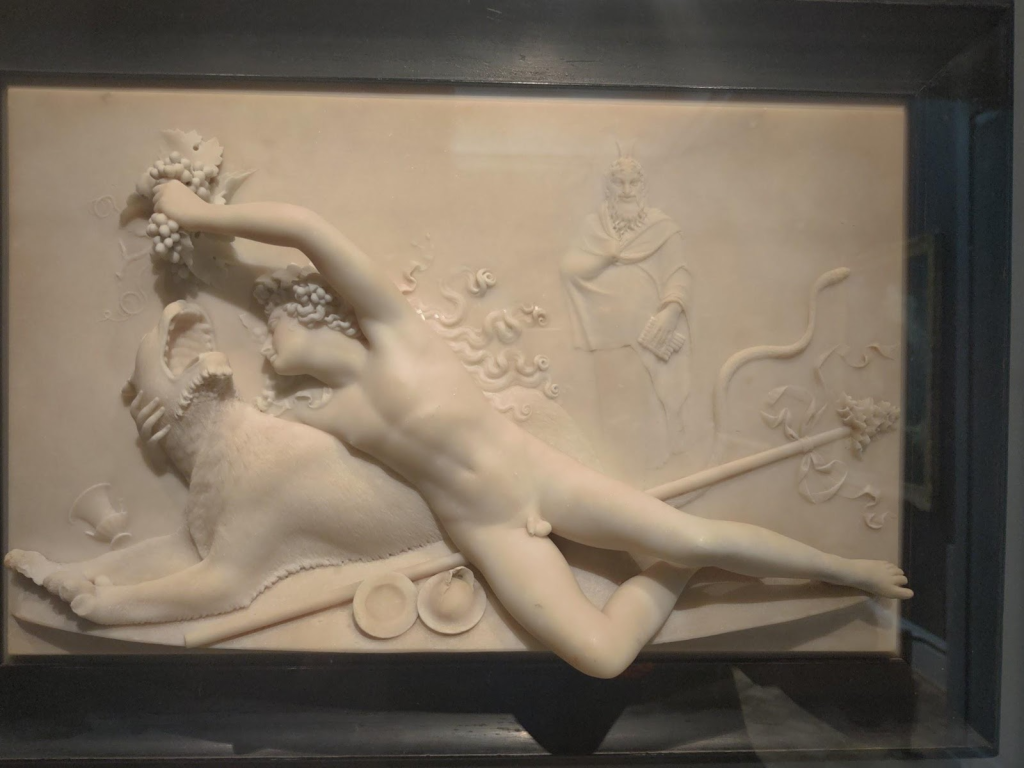
Having finished with the museum, we walked along the streets, looking around, as tourists are supposed to.
Finally, late in the afternoon, we got in the car and headed to our next destination—Sheboygan in the neighboring state of Wisconsin. It was about time: Chicago, in large doses, is very tiring. 🙂
Sheboygan
Sheboygan is a small town in Wisconsin, on a lake, naturally. Since I was combining my trip with work, we rented a house there for three days. The idea was that I'd work in the morning, occasionally running for a swim in the lake (it's a leisurely 10-minute walk away), and then we'd hike the trails, paddle an inflatable kayak down the Sheboygan River, swim in the lake again, and admire the sunsets. And I must say, we followed our plan. But there was a catch: the water in Michigan turned out to be surprisingly cold. It felt like 15 degrees, no more. It's completely unclear why this was so—the water on our side of the lake was perfectly comfortable. We still swam, of course, but not for long and without much enjoyment.
We also went for a walk along the paths in the nearby park.
But I liked the town itself—quiet and green. There's a nice little neighborhood in the center you can stroll through, and there's a path along the lake. I don't know what it's like in the winter, but it's quite pleasant now, despite the cold lake. There's also a smoked fish shop and a local brewery. And the sunsets weren't bad either.
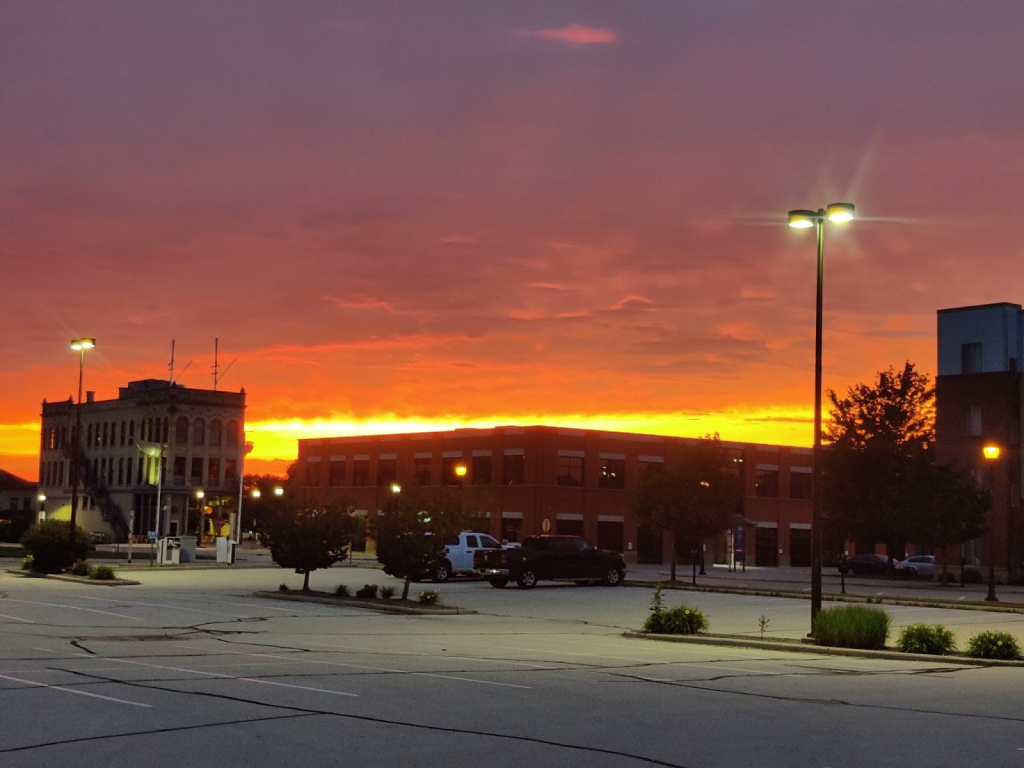
Do you see the fire? But it's not there!
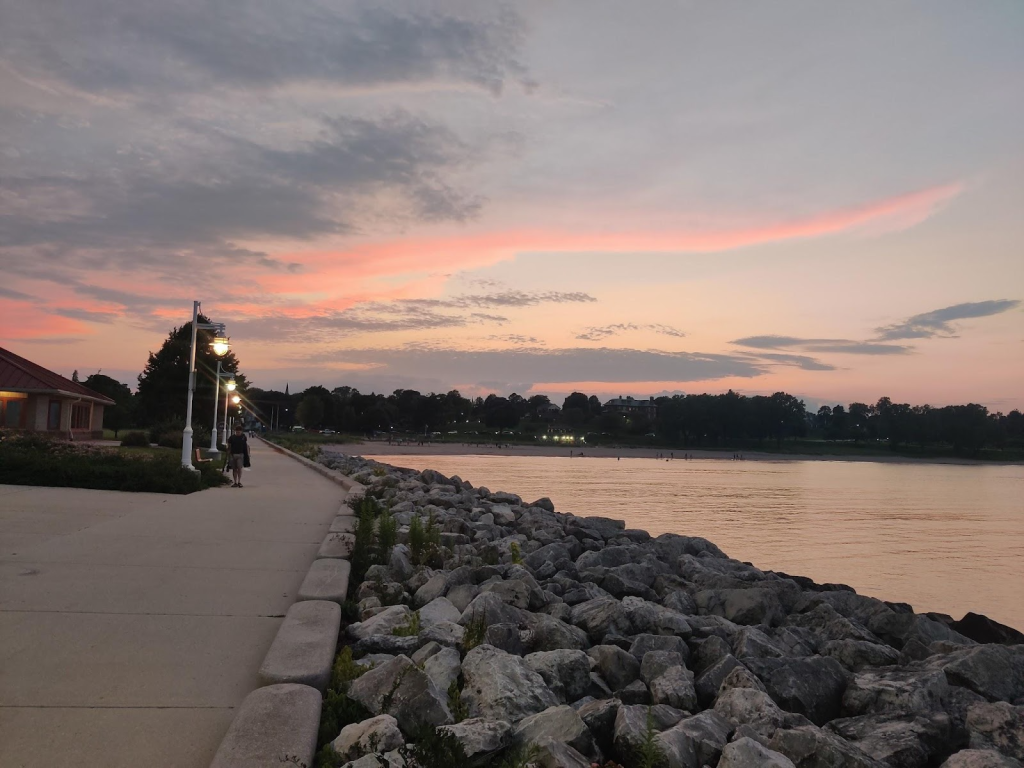
Green Bay.
This town looked like an interesting place to spend a couple of days—a river, a long, narrow bay, and several large Wisconsin state parks in the surrounding area. But I was a little disappointed. Everything was as expected—a nice downtown, a long riverside path for walking or jogging, and the parks were nice. But all these advantages were negated by the factories—it turns out Green Bay has quite a few of them. They were on the other side of the river, but they still spoiled the view. And the air, too (in places), smelled just like my native Chelyabinsk. Overall, the town felt a bit uninviting. I probably should have chosen a smaller, more compact town further up the peninsula.
We still had a great time there though.
And there were pelicans! This still amazes me: I always thought pelicans were seabirds of southern latitudes. Before that, I'd only seen them in Florida, never in Michigan. It was very strange to see them on a freshwater lake and so far north.
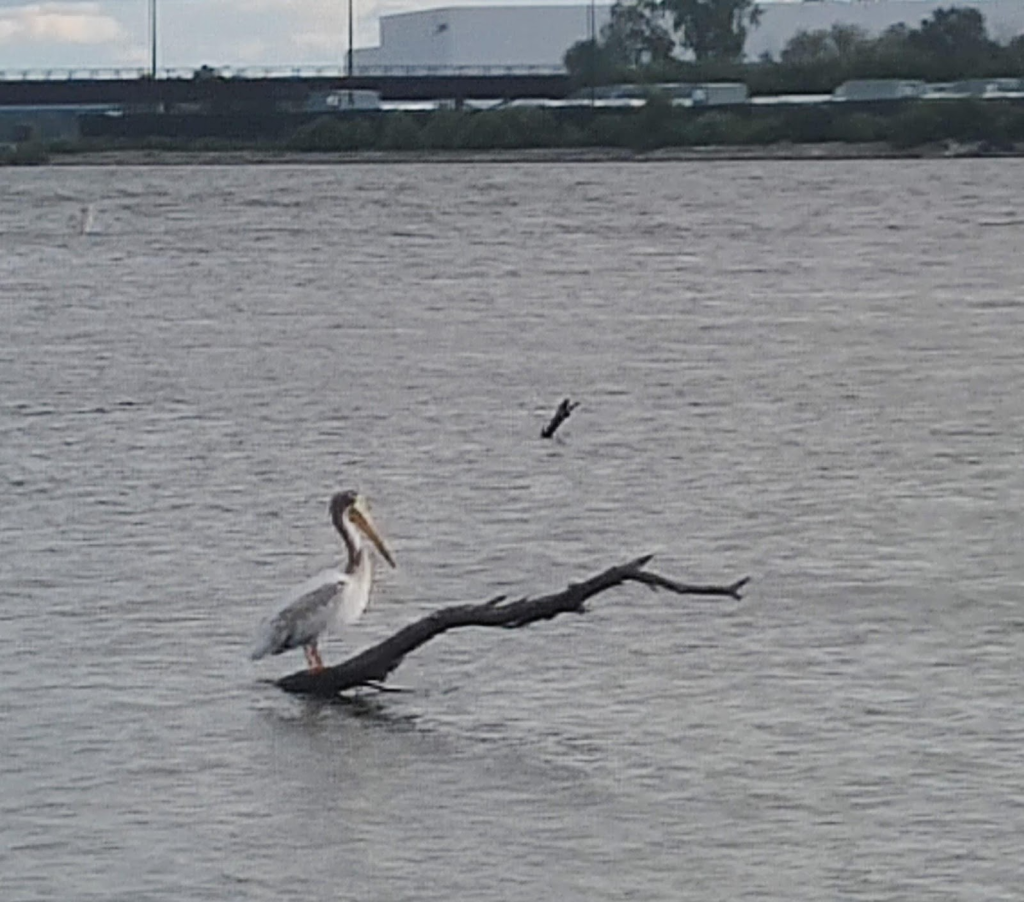
Picturesque cliffs
After leaving Green Bay, we reached the border with Michigan quite quickly. It really warmed our hearts!
We were set for a three-day hike through one of the most beautiful places in our state, the Scenic Rocks National Seashore (Pictured Rocks National Lakeshore). This is no longer Lake Michigan, but another great lake - Lake Superior.
I'd been dreaming of hiking this route in this park for a while, but technically it wasn't that easy. Since it's a national park, overnight stays are only allowed at designated campsites (unlike in a national forest), and the number of spaces at these campsites is severely limited. So, every time I tried to reserve a campsite, they were already taken. Especially since I needed to find two campsites that would split the entire route into three roughly equal sections.
But this time, I planned the route in advance, and campsites were fairly easy to find. We decided to spend the first night in the car at a "wild" campsite near the start point. In the morning, I dropped Natasha off with both backpacks at the start of the route and drove to the finish line. There, I parked the car in the parking lot, and a special bus picked me up and took me back to the start (all of this was planned in advance, of course). This way, we would head back to our car and wouldn't have to retrace our steps.
What can I say about the hike? It exceeded all my expectations and was undoubtedly the highlight of the trip. For some reason, this route reminded me of another coastline we hiked along two years ago: Cinque Terre in Italy. Although the landscape here was quite wild, unlike Italy, the common thread was that both coastlines were incredibly beautiful. We were very lucky with the weather: we got caught in a light rain on the first day, but the rest of the day was clear, allowing us to fully admire the beautiful Lake Superior.
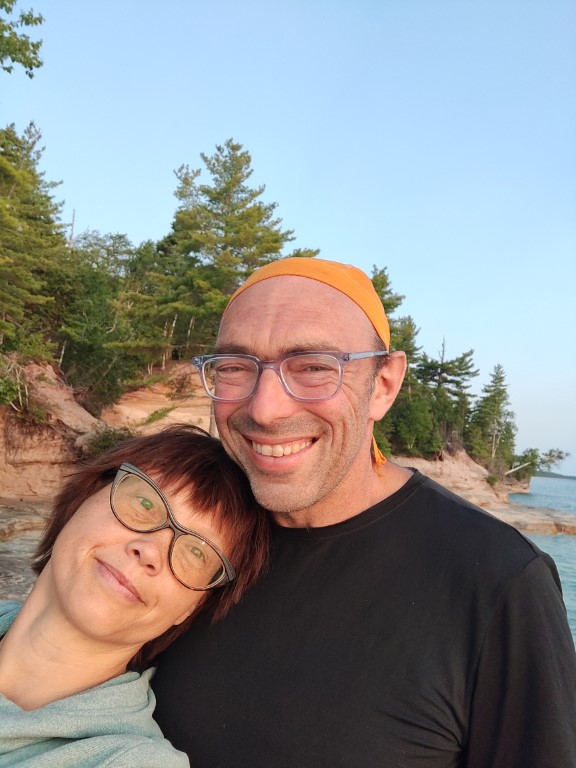
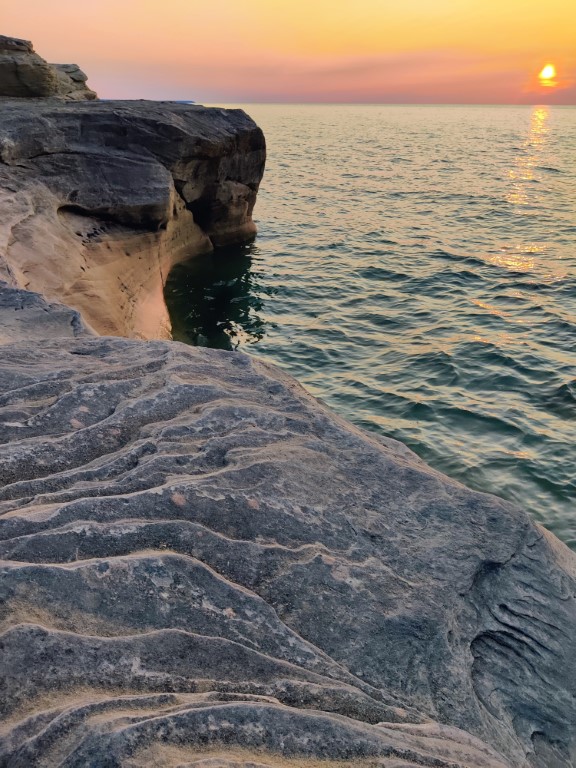
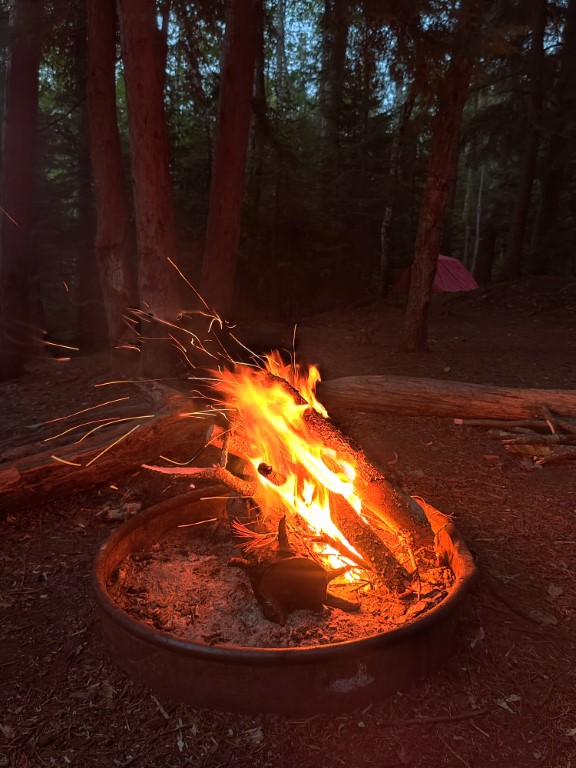


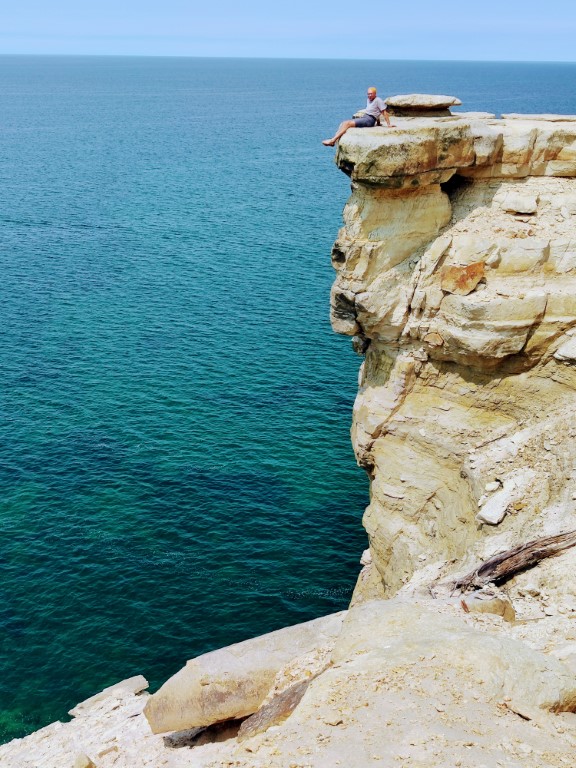
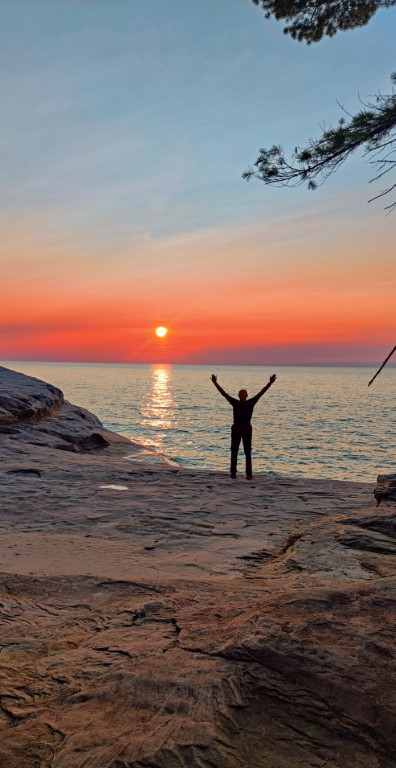

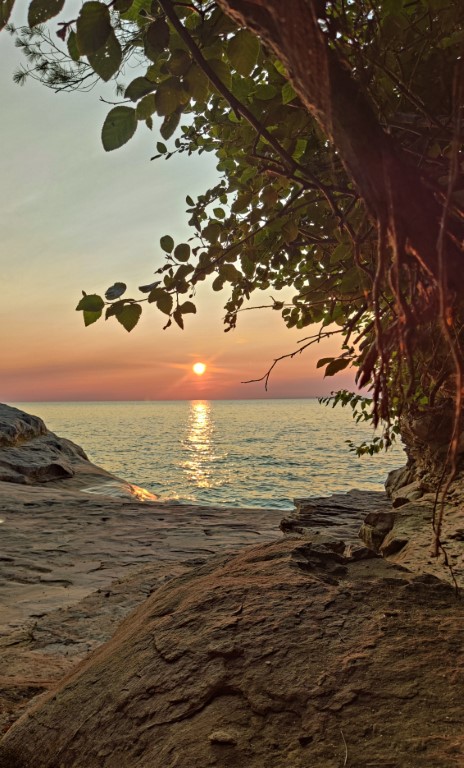
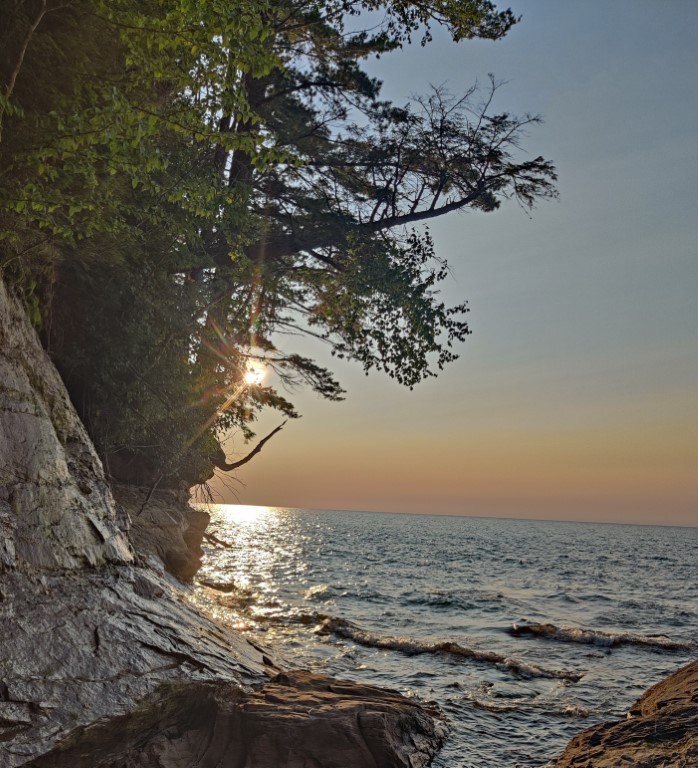

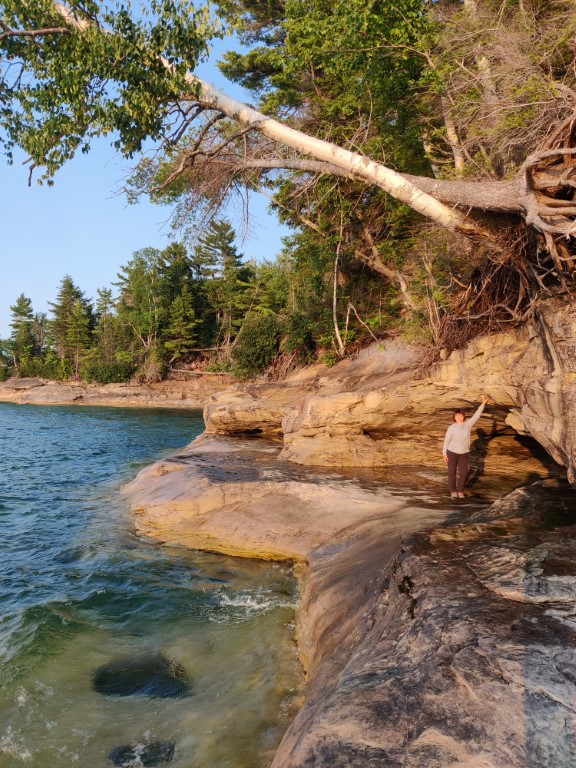
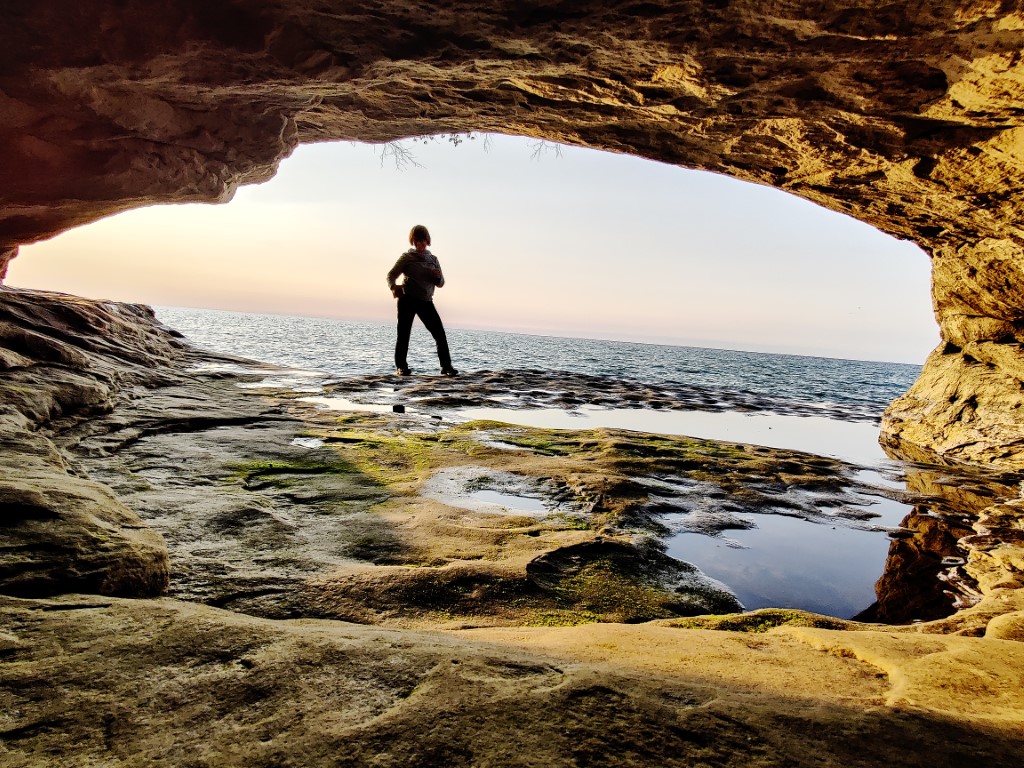
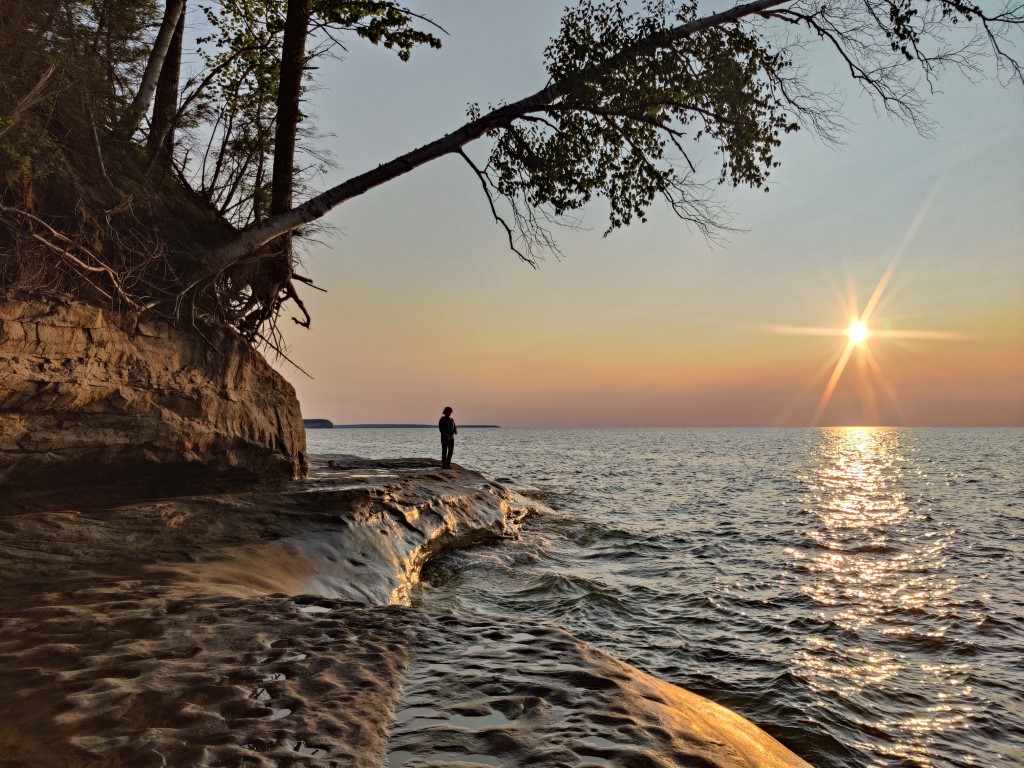
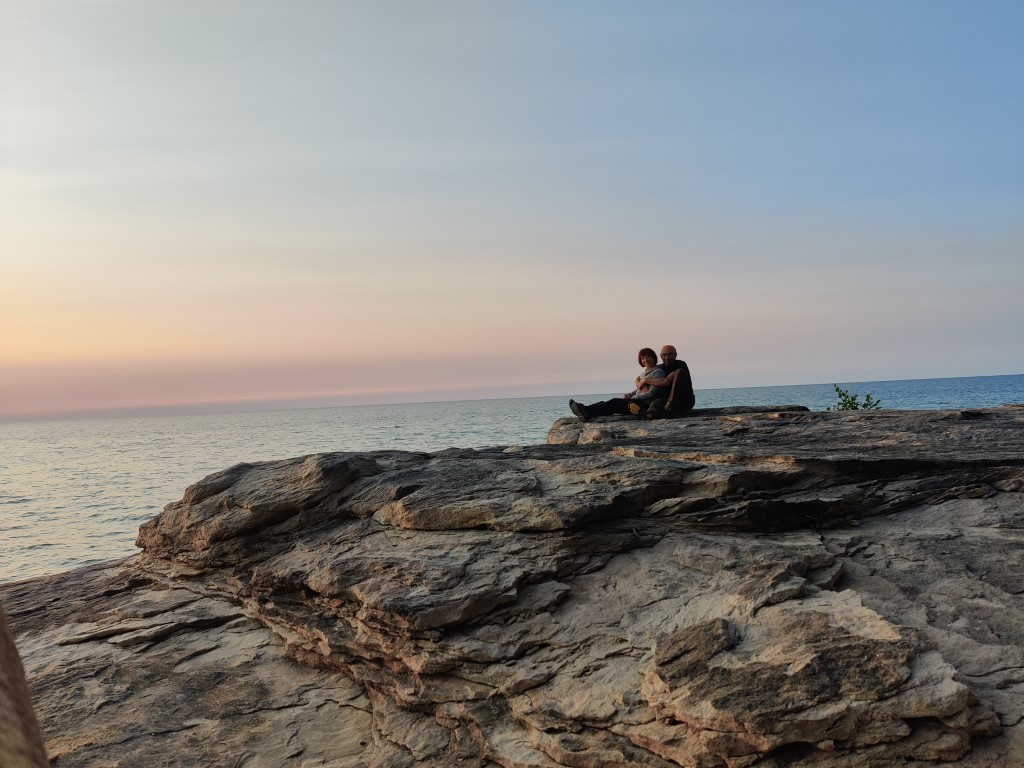

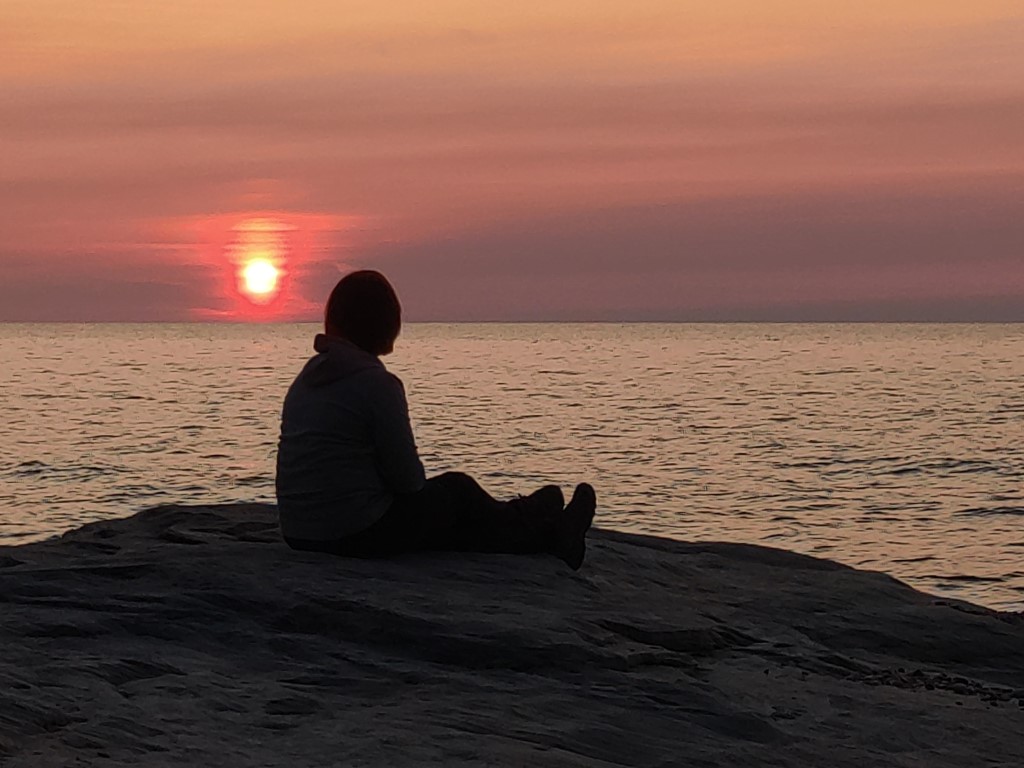
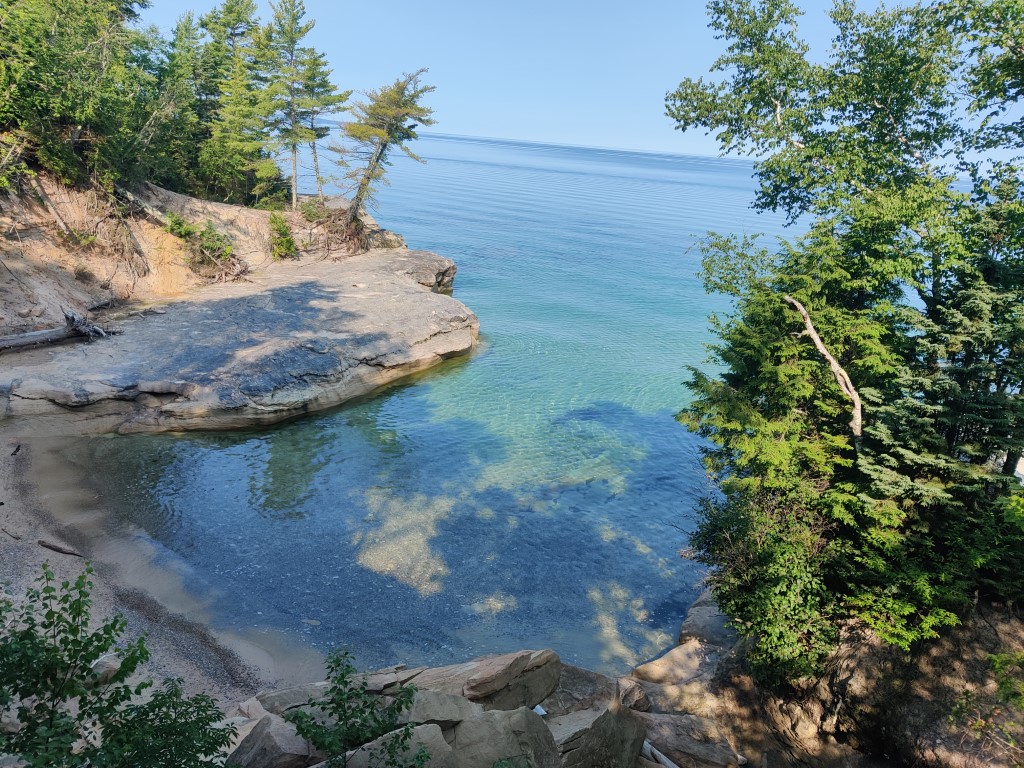




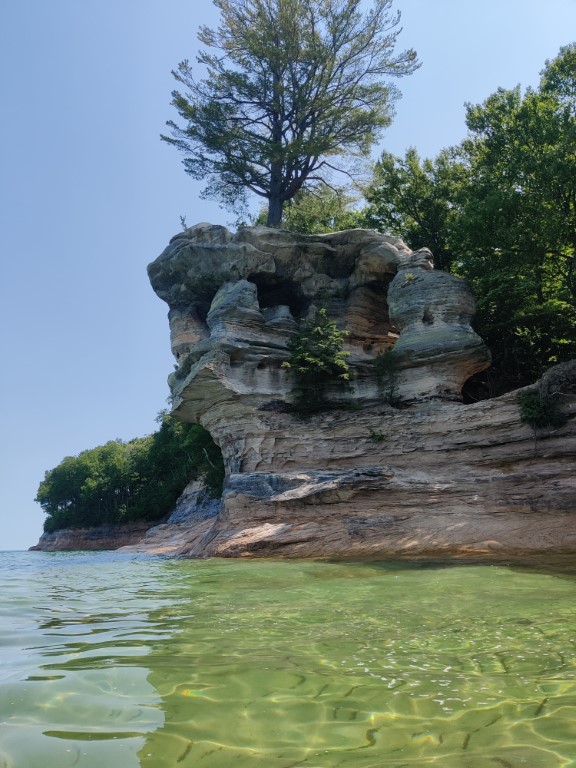
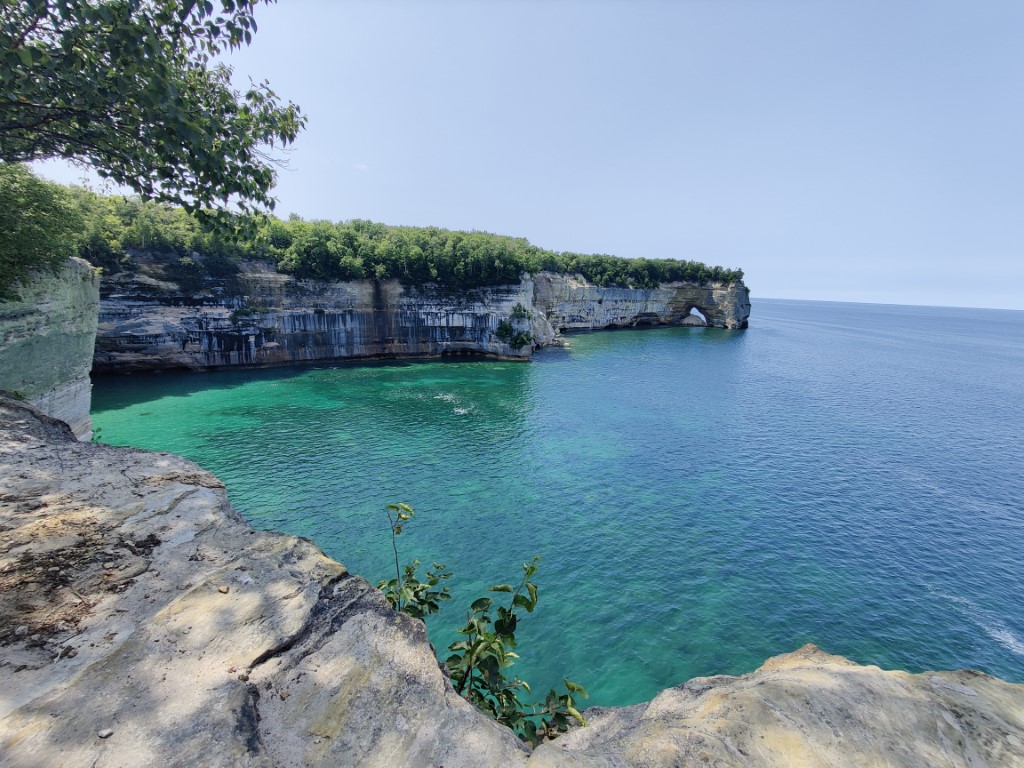
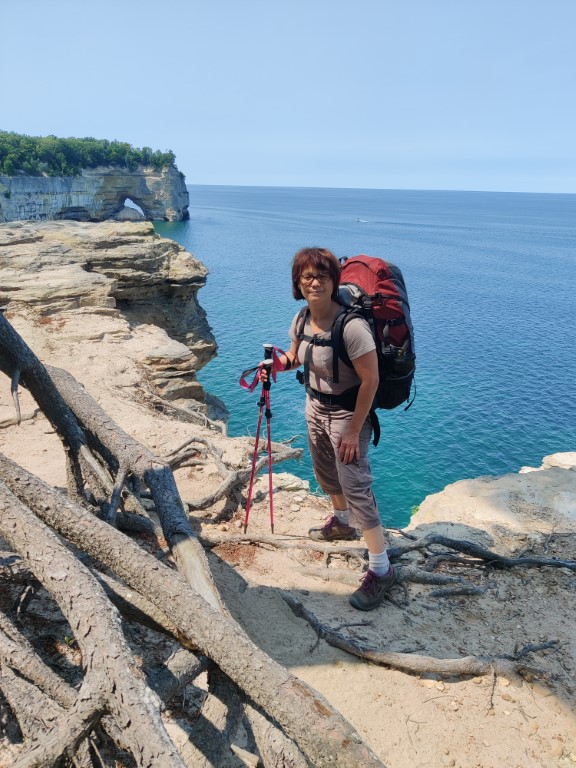
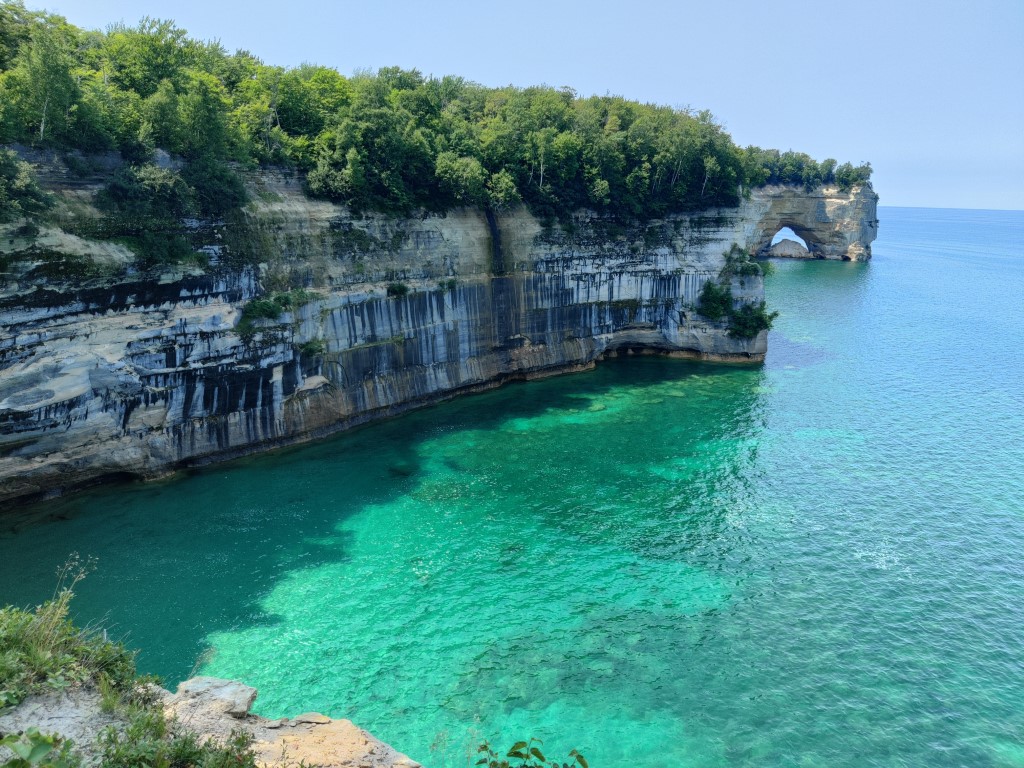
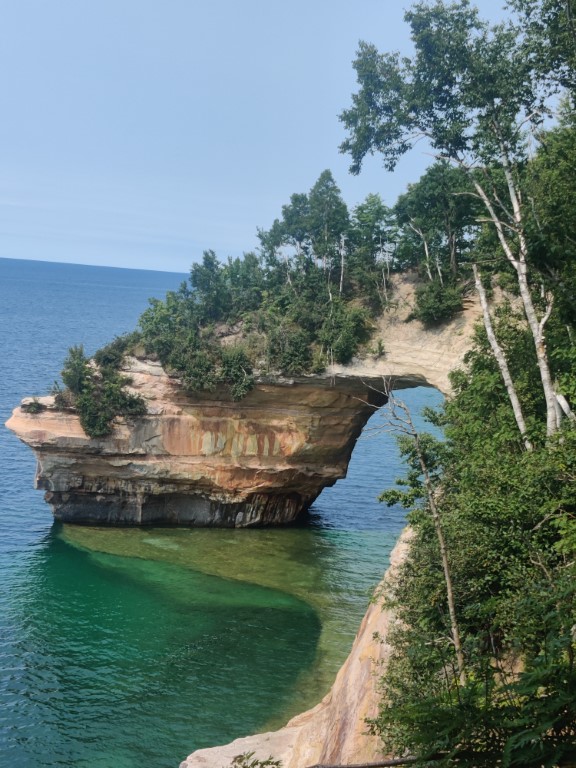
Besides the rocks, the route was memorable for the mushrooms. There were plenty of them, often right on the trail—mostly milk mushrooms and porcini mushrooms.
For the first two days, we bravely passed by, but on the third, final day of the route, we decided to indulge our souls and adjacent body parts (our stomachs) and gather some porcini mushrooms for frying. Sometimes, we had to risk our lives to gather them…
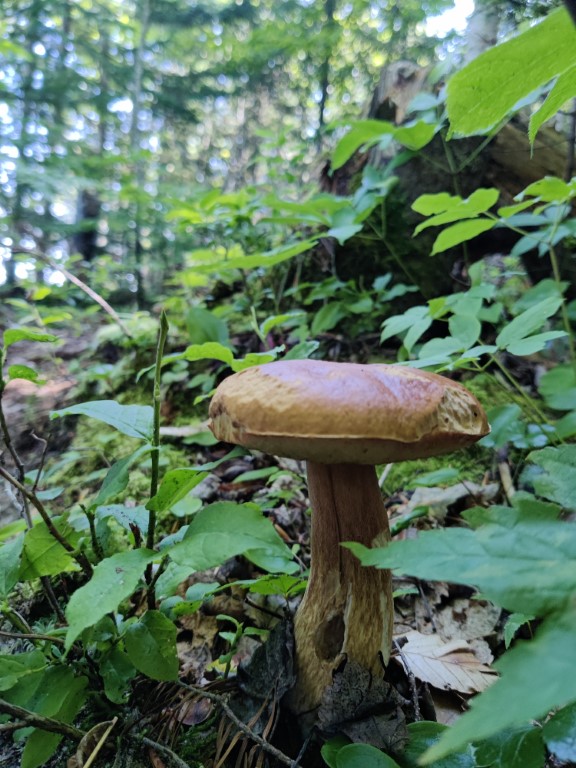
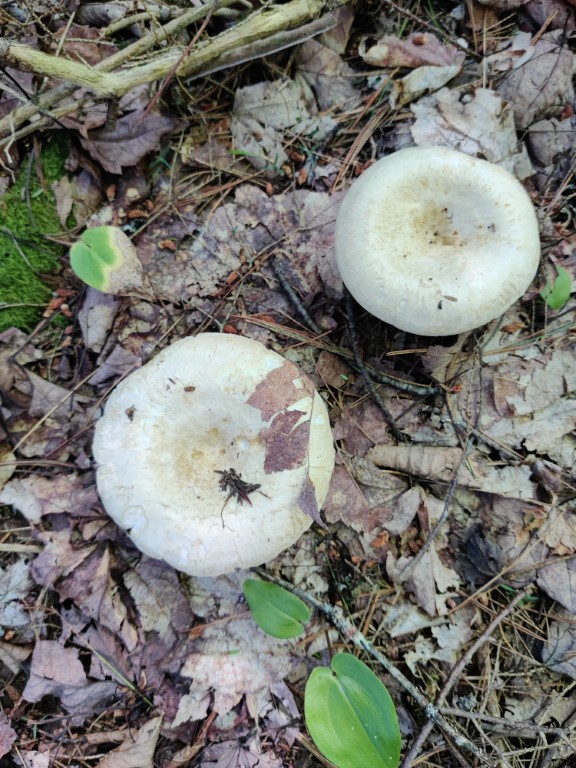
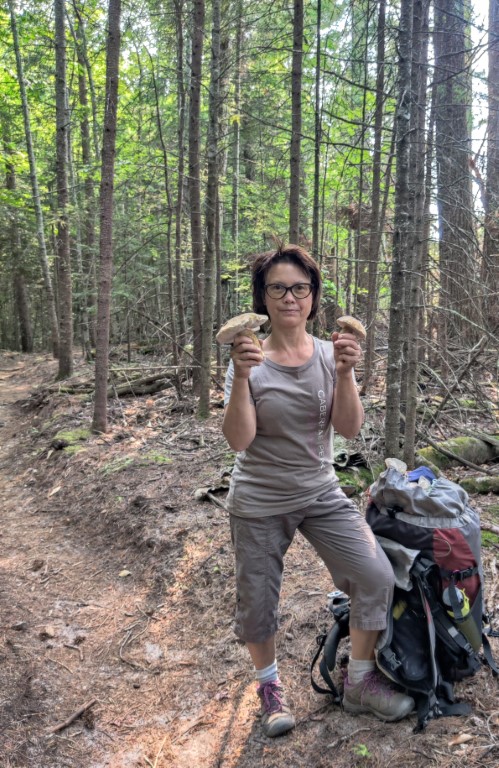
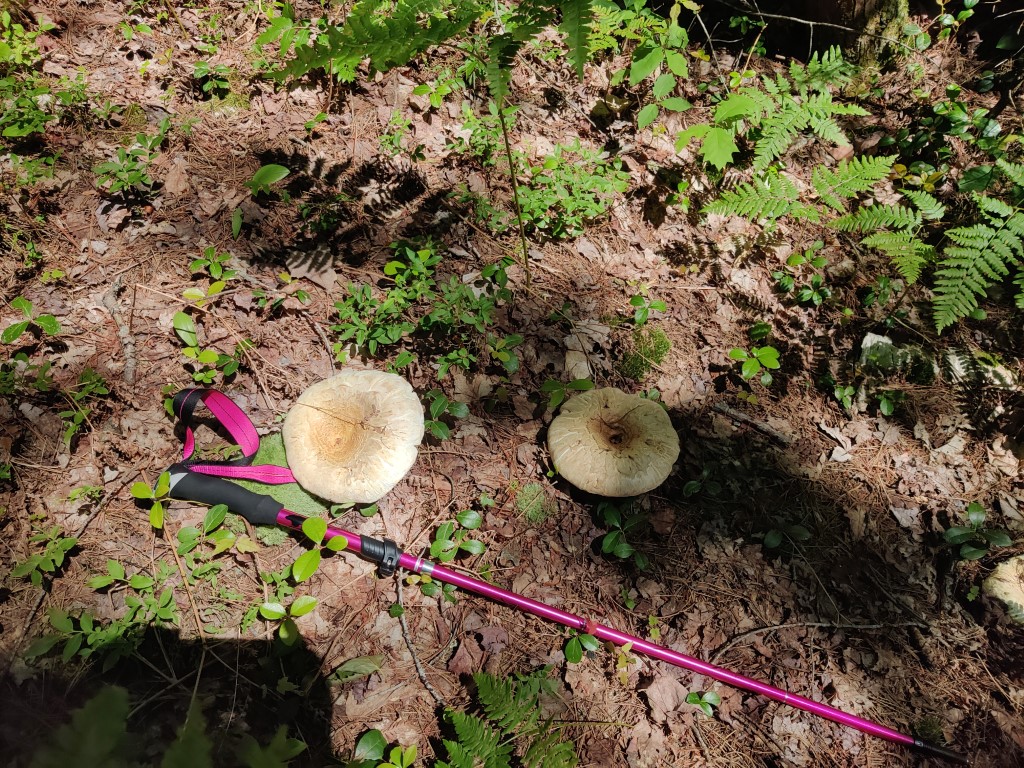
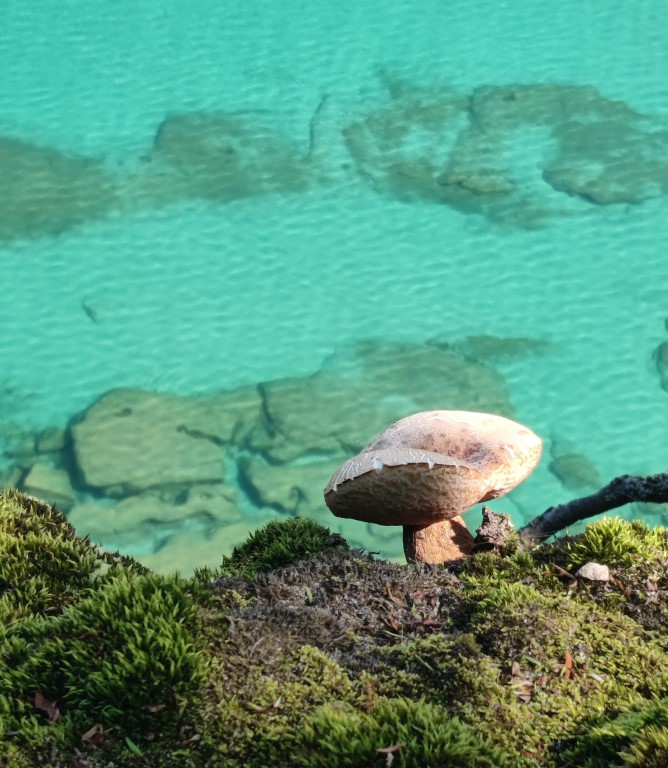

Imagine our indignation when, arriving at yet another rental in the town of Manistique and frying a pan of mushrooms, we discovered that many of the porcini mushrooms were inedible because they were bitter! An internet search revealed that in these parts there is a type of boletus called "“gall mushroom”(also known as "bitter"), which are almost impossible to distinguish from normal white ones. Especially if you don't know. The main difference is that they change color when cut (not always) and taste bitter... I had to throw them all out. Now we know.
Manistik
Manistique is a small town on the northern shore of Lake Michigan. It once made a fortune in logging: the town boasts a convenient harbor, and valuable Michigan white pine was shipped from here throughout America and even to Europe. Today, it thrives primarily on tourism. It has a pleasant downtown, a beach, and a lighthouse.
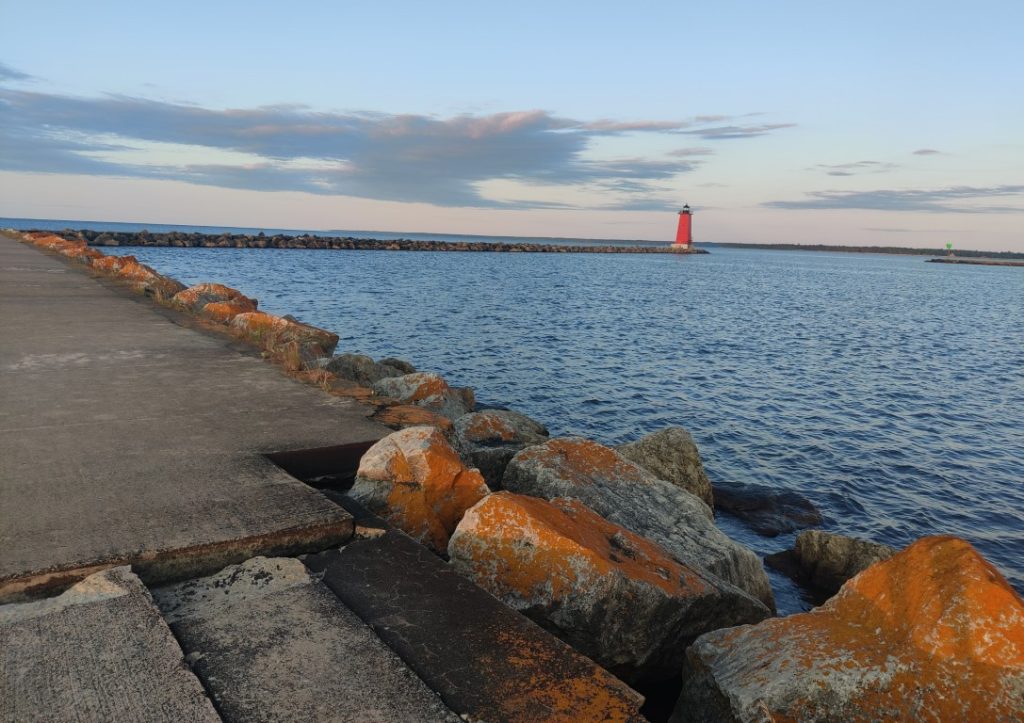

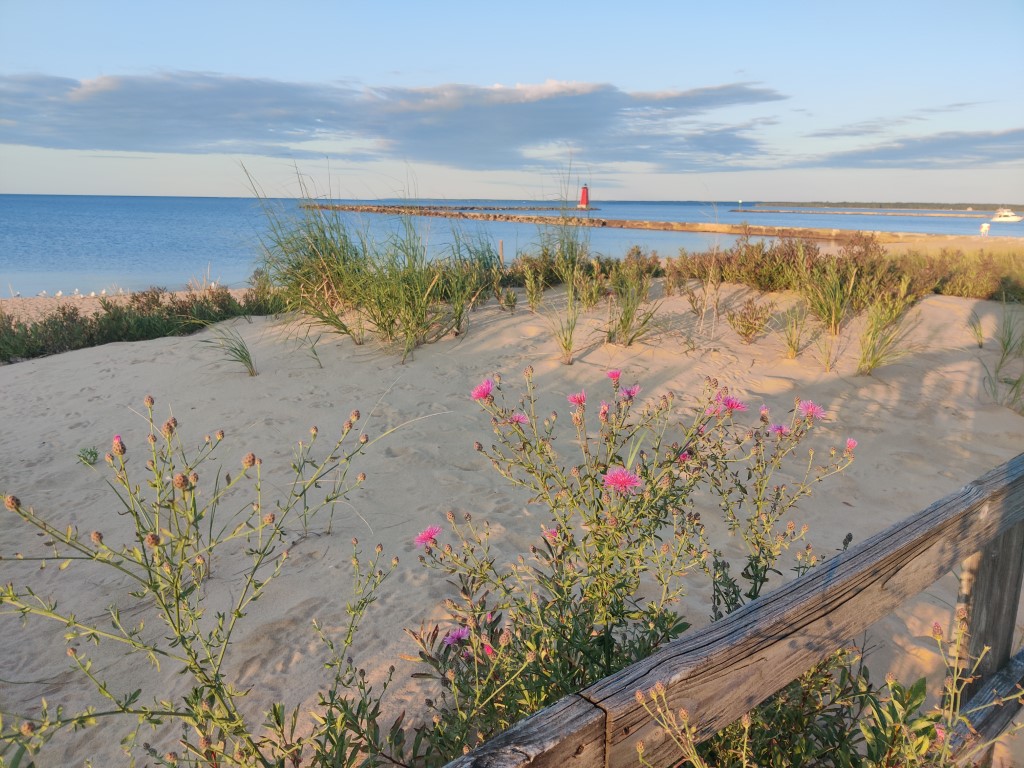
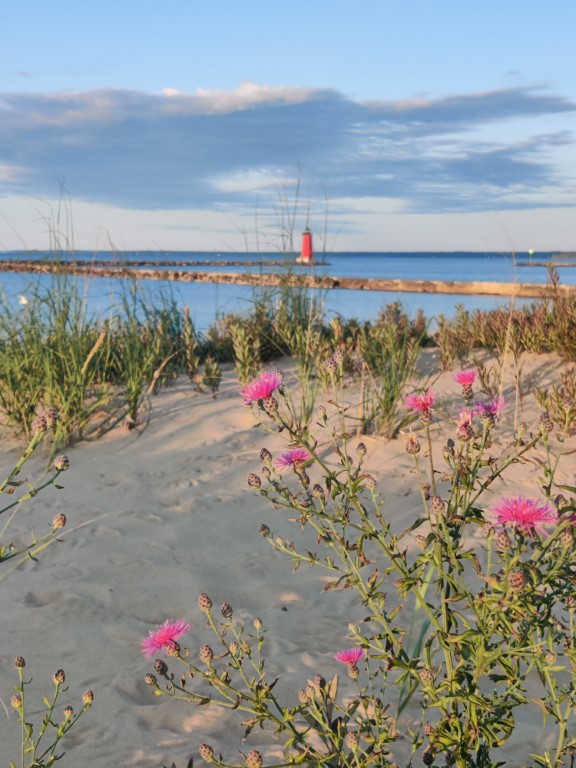
And also, very close by, is the largest spring in Michigan with a hard-to-remember name. Kich-iti-kipi. We've been there a long time ago, but now we were happy to go there again.
The Ghost Town of Fayette
We'd been to this place before, but we decided to go again, since we had some time left after visiting Kich-iti-kipi. And we didn't regret it at all!
In the 19th century, Fayette wasn't a ghost town. It was a pillar of local industry—the iron smelter located there was the most productive in the entire Upper Peninsula. The smelter, and the settlement around it, weren't built here by chance: the Jackson Iron Company, which mined iron ore in the surrounding area, needed a smelter in a location that would allow for easy export. In the Great Lakes region in the 19th century, "export" meant shipping by ship, so a convenient harbor was needed. And in 1867, a company agent named Fayette Brown decided the location was suitable. The settlement was named after him. There was a bay, abundant timber and limestone, essential for iron smelting, and a railroad nearby. The smelter operated for 24 years, after which it became unprofitable—the market had shrunk, so the company simply shut down operations. People continued to live there, hunting and fishing. There were attempts to create a tourist center here, but it seems they failed. Since 1959, it has been a Michigan state park.
What struck me was how well-built and neatly constructed the housing for the workers and employees was. I had something to compare it to: I'd seen plenty of workers' settlements at factories—the entire Urals was built from such settlements. There was no trace of barracks here: small but separate houses for family workers, perfectly decent dormitories for single workers, and decent enough, even by today's standards, housing for white-collar workers. Of course, with the ironworks rumbling and smoking right next door, the picture was far from idyllic, but still: compared to the factory settlements of Russia, this was the very "garden city" dreamed of by the workers in Mayakovsky's poem.
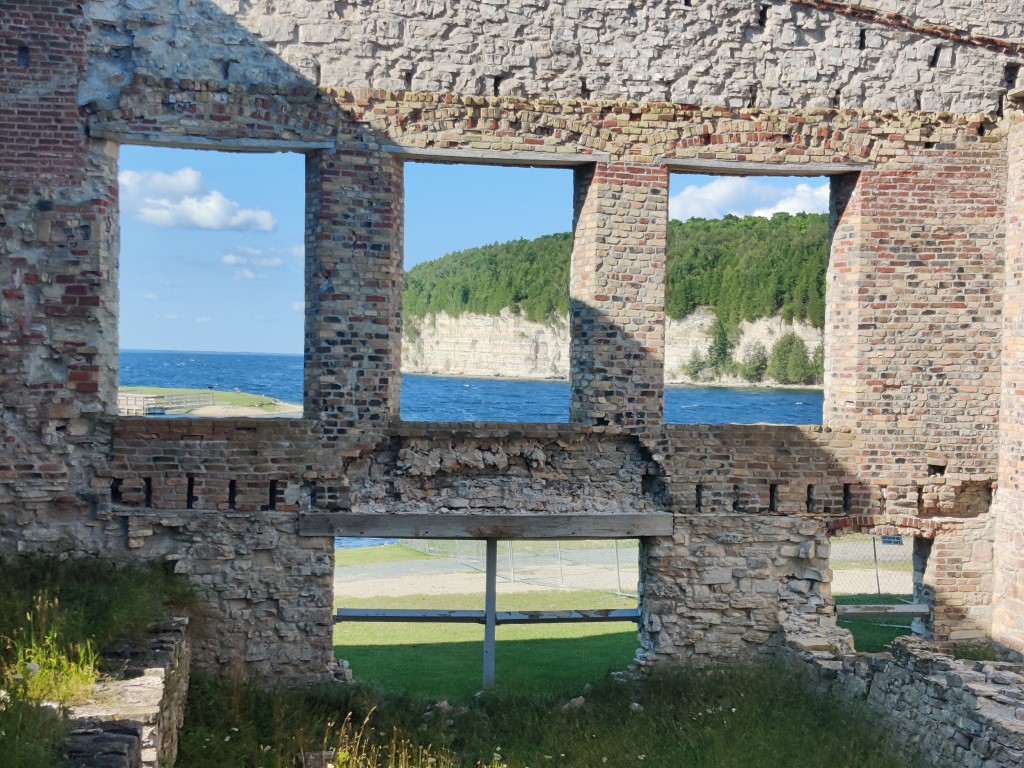
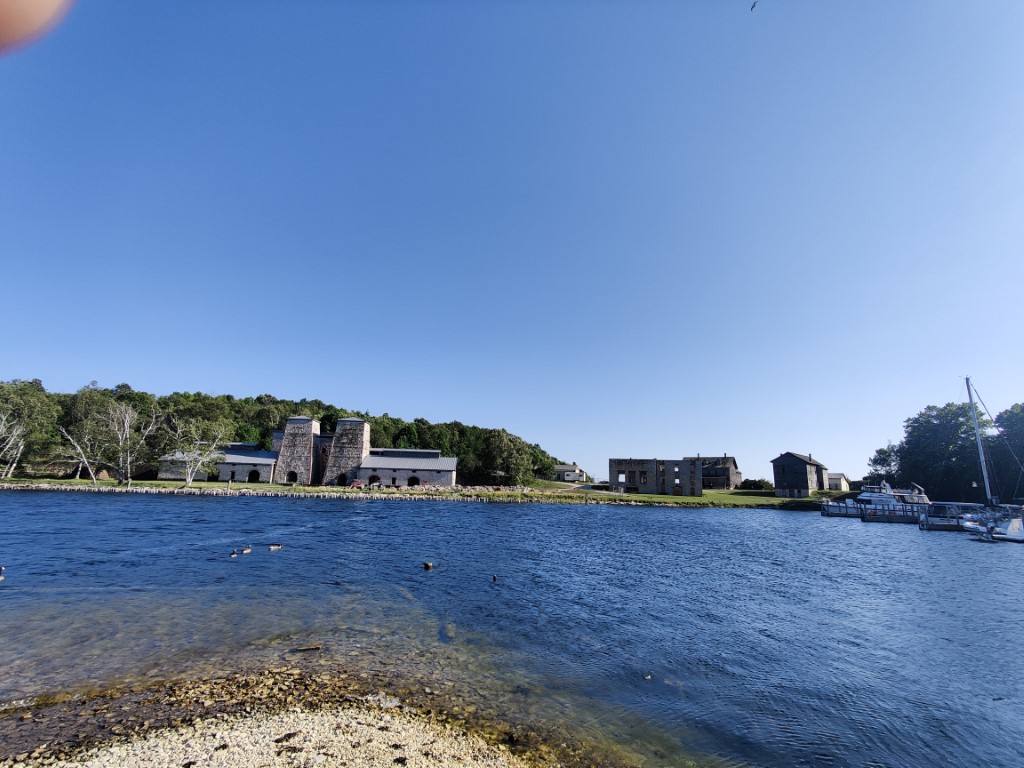
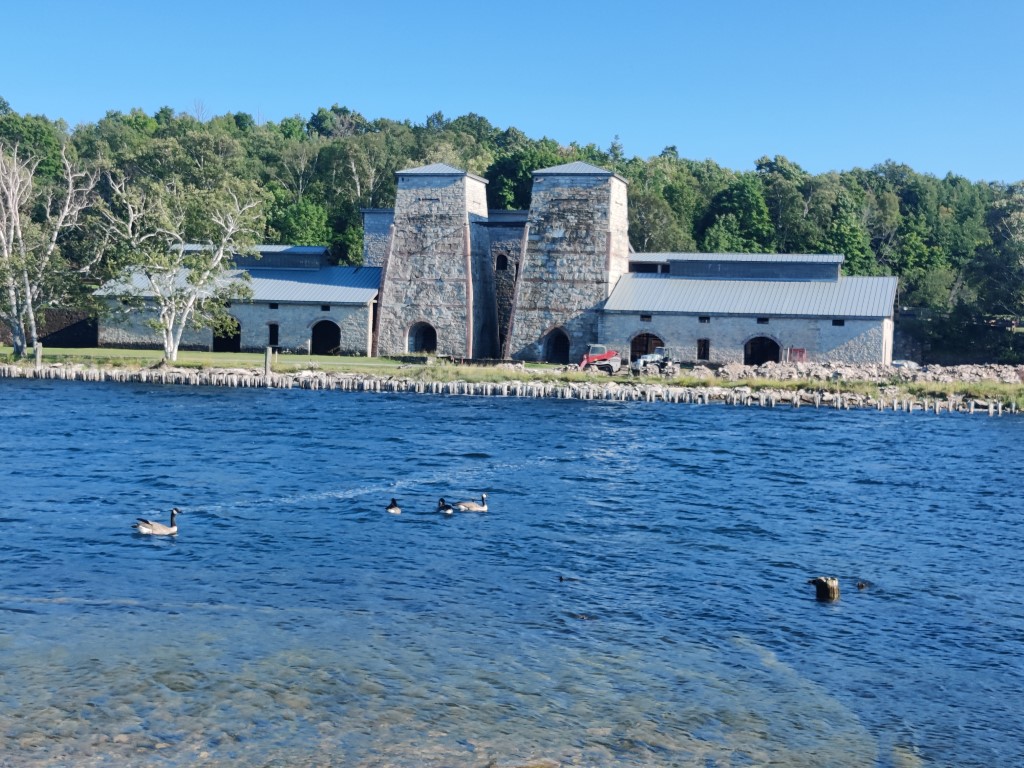
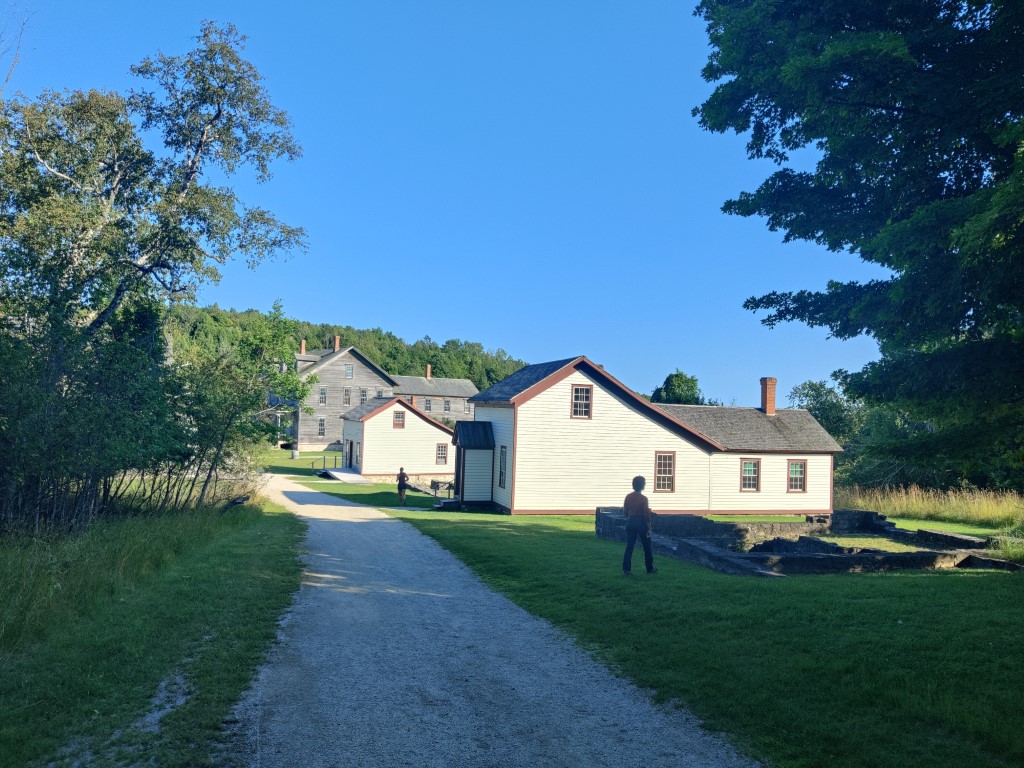

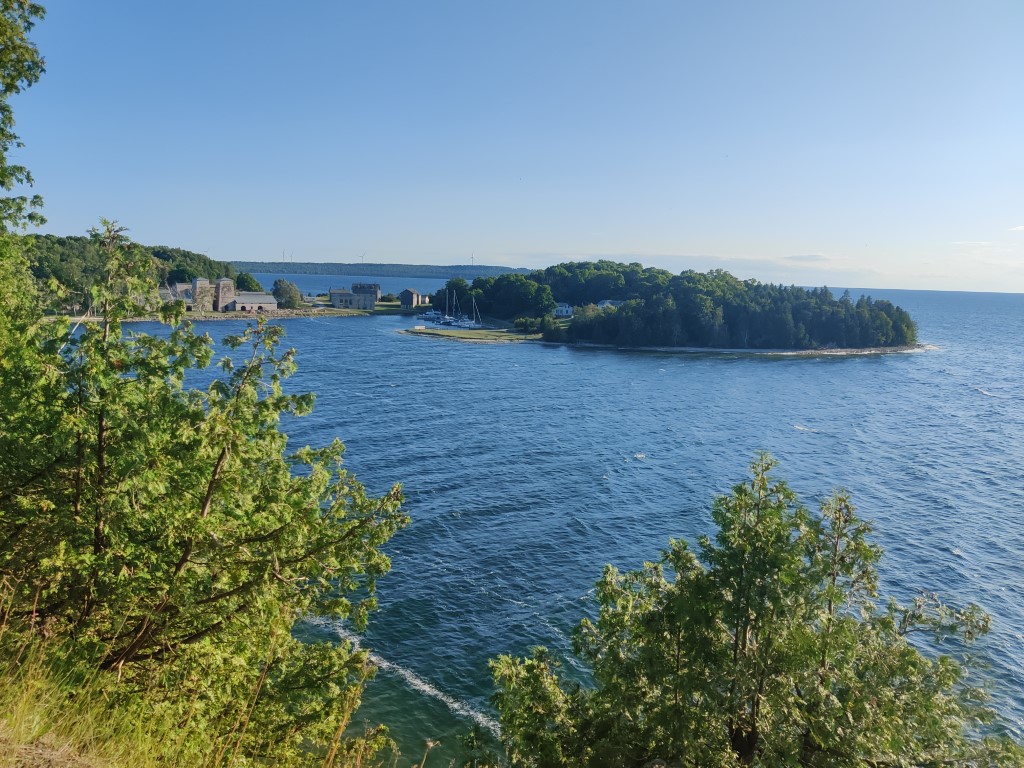
The sky is blue over Canada.
I had planned to spend the final leg of my trip on the east shore of Lake Michigan, somewhere around Petoskey. But while I was looking for a place to rent, I saw a really nice house on the shore of Lake Superior, on the Canadian side. I'd been wanting to see that part of the coast for a while—I'd heard it was so beautiful. And the house itself looked wonderful—with its own beach, right at the edge of the world: a 10-minute walk from the house, the road ended and the cliffs began. It was a wonderful place to go! So we went. And it was a great choice.
Besides the beautiful (and quite warm) lake, we had cliffs, waterfalls, kayaking on Lake Superior (a little scary, our inflatable kayak is not designed for this, although the waves were small and we paddled close to the shore), a campfire on the shore and breakfasts with a view of the lake.
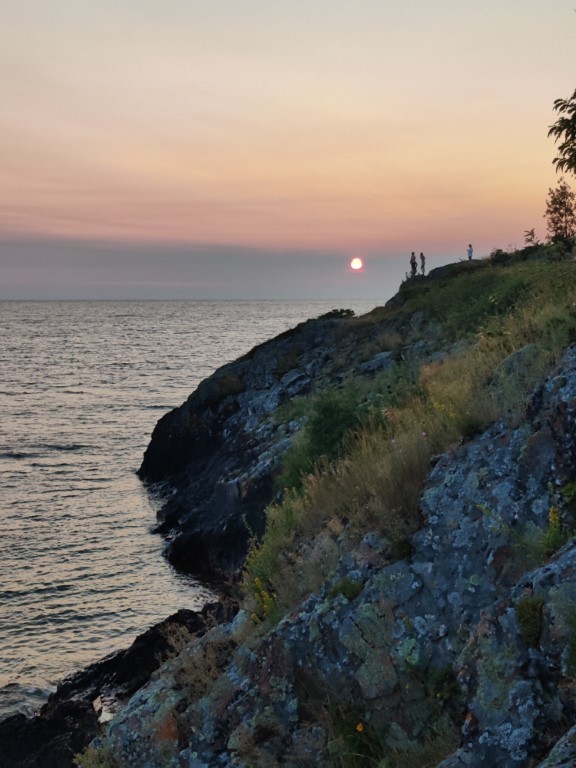

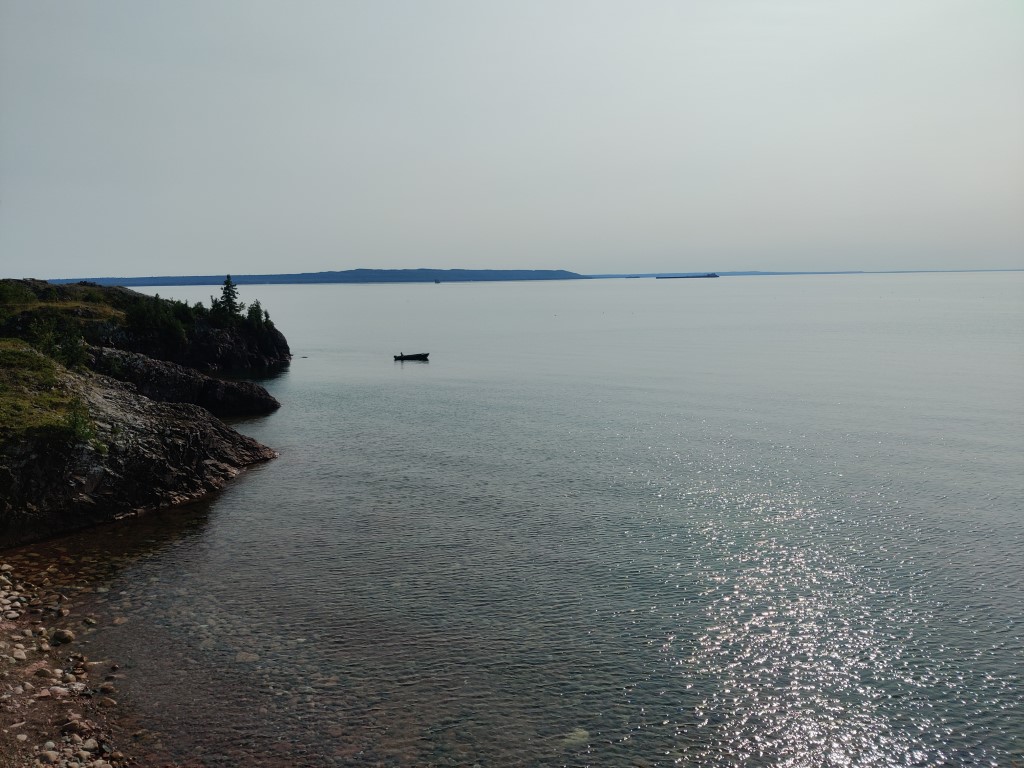
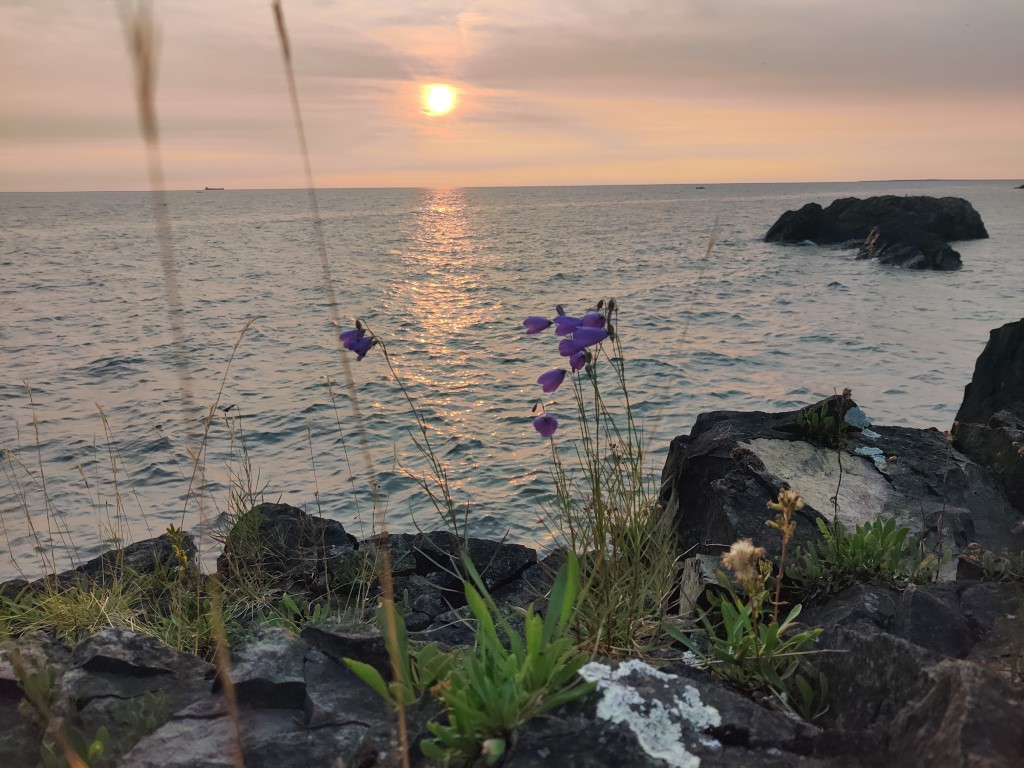
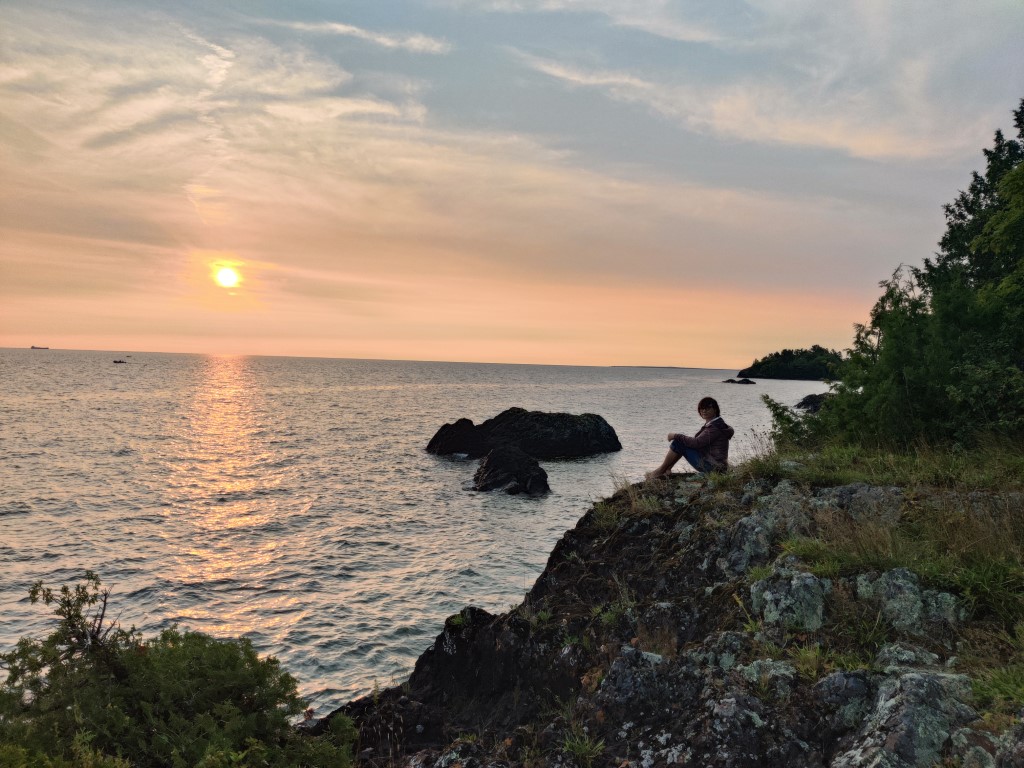


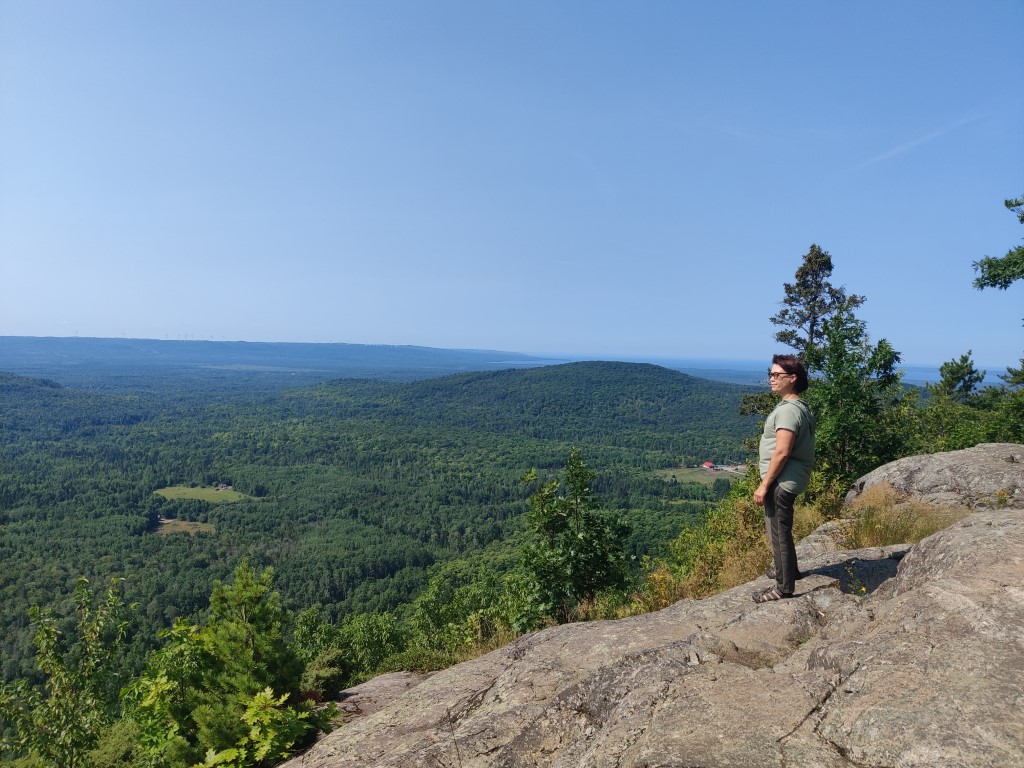
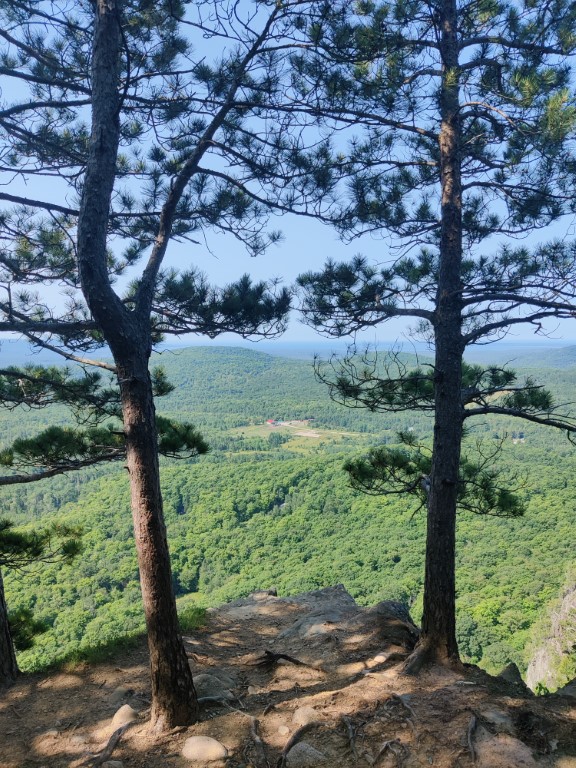
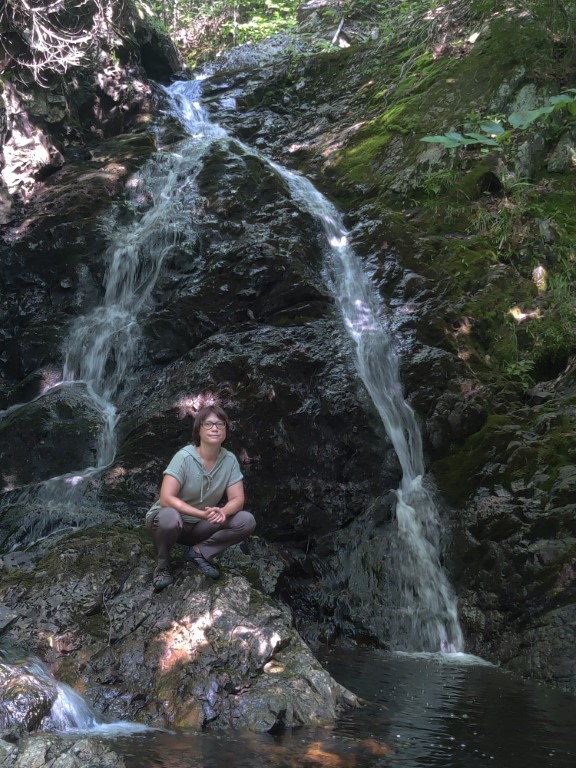


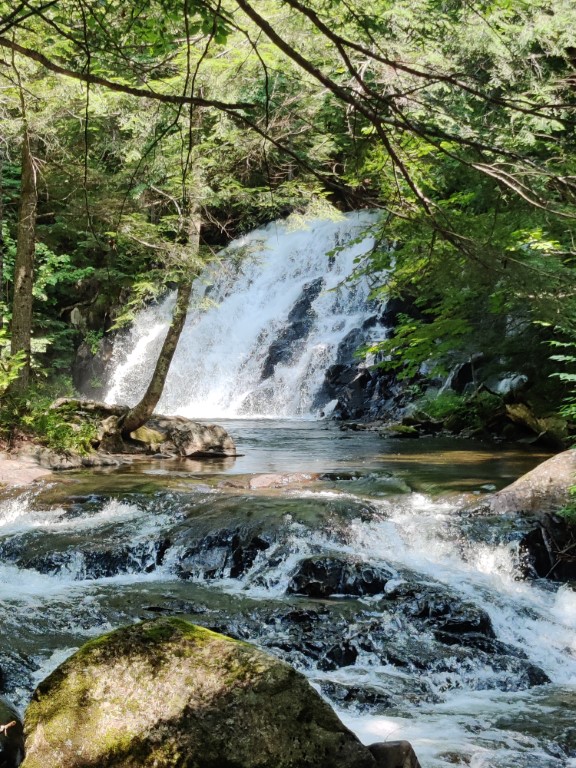
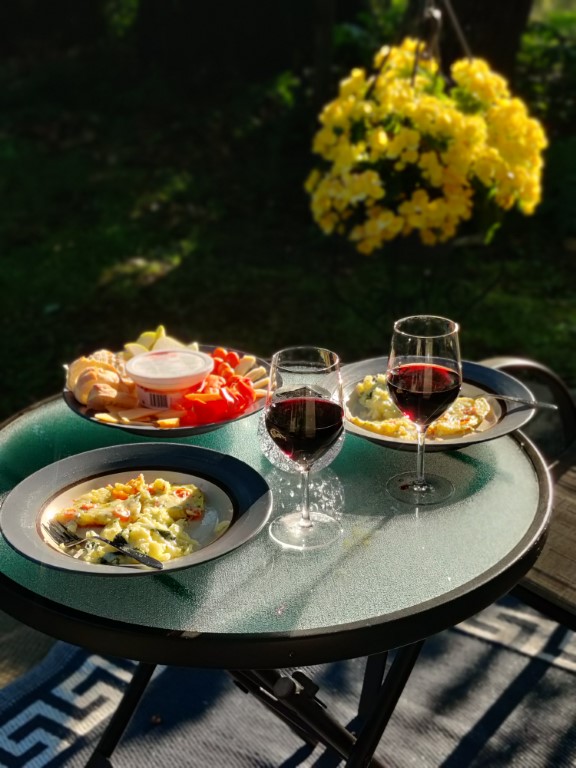
The way home
Well, then everything was simple - we left in the morning, stopped along the way above the bridge buy some smoked fish, then stopped again below the bridge — take a swim in Lake Huron (our third Great Lake of the trip) with a view of the bridge, and then just four hours and we're home. Circle complete!